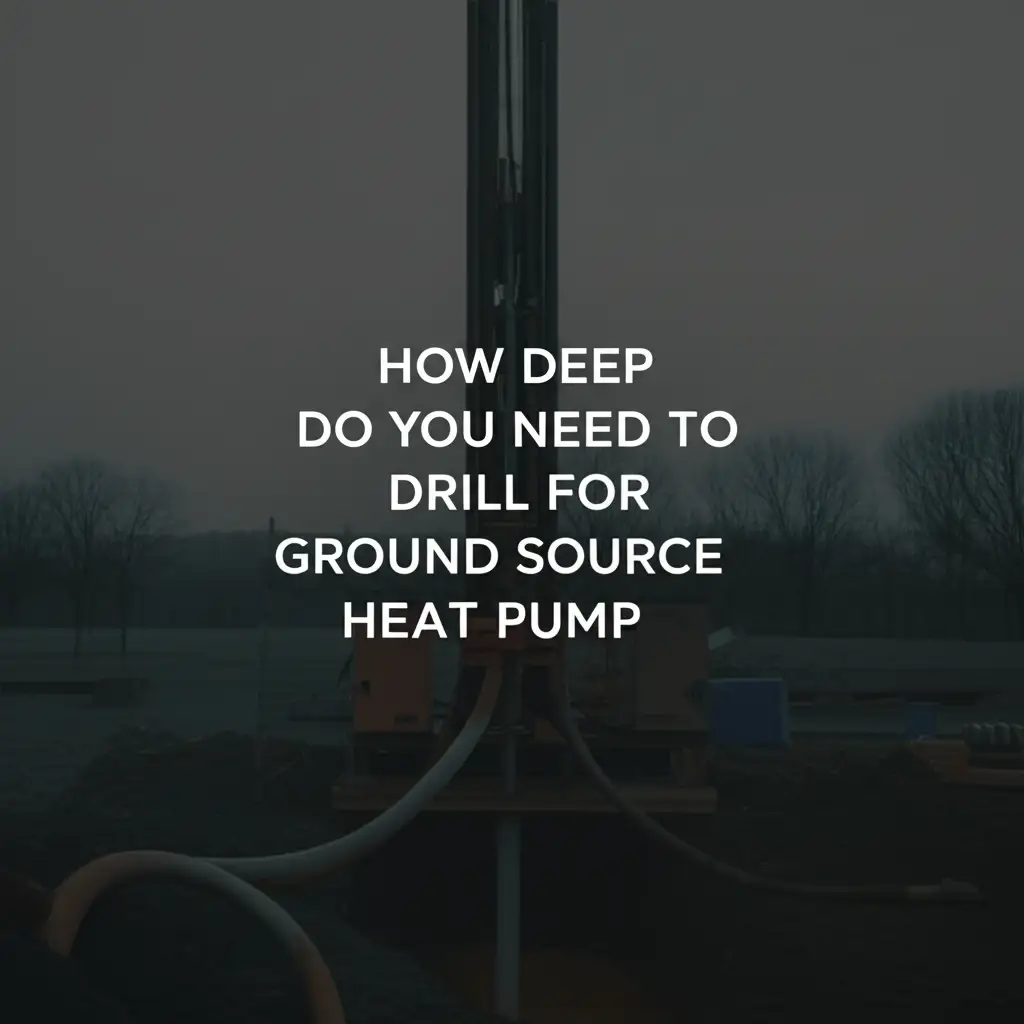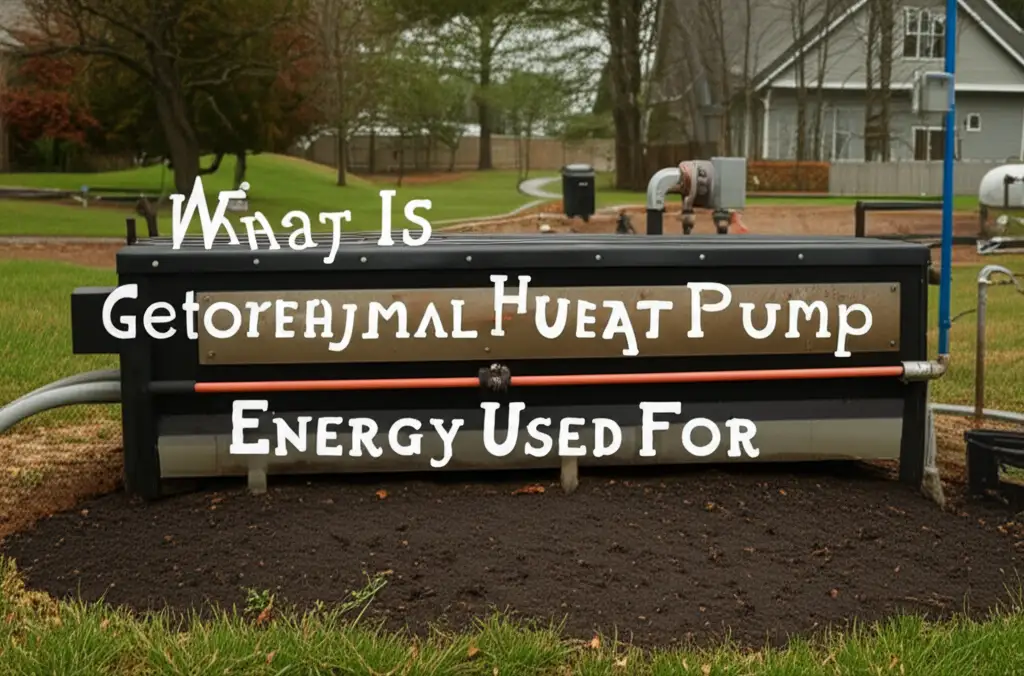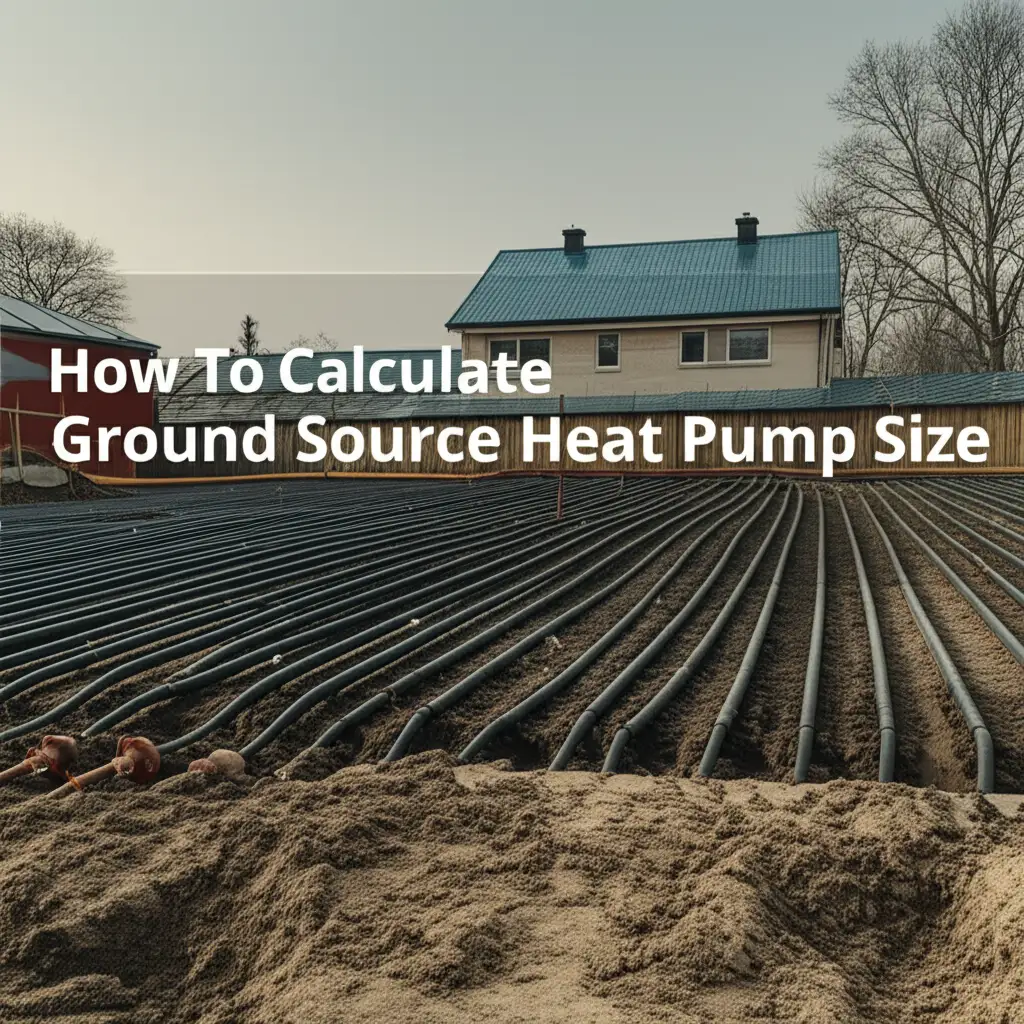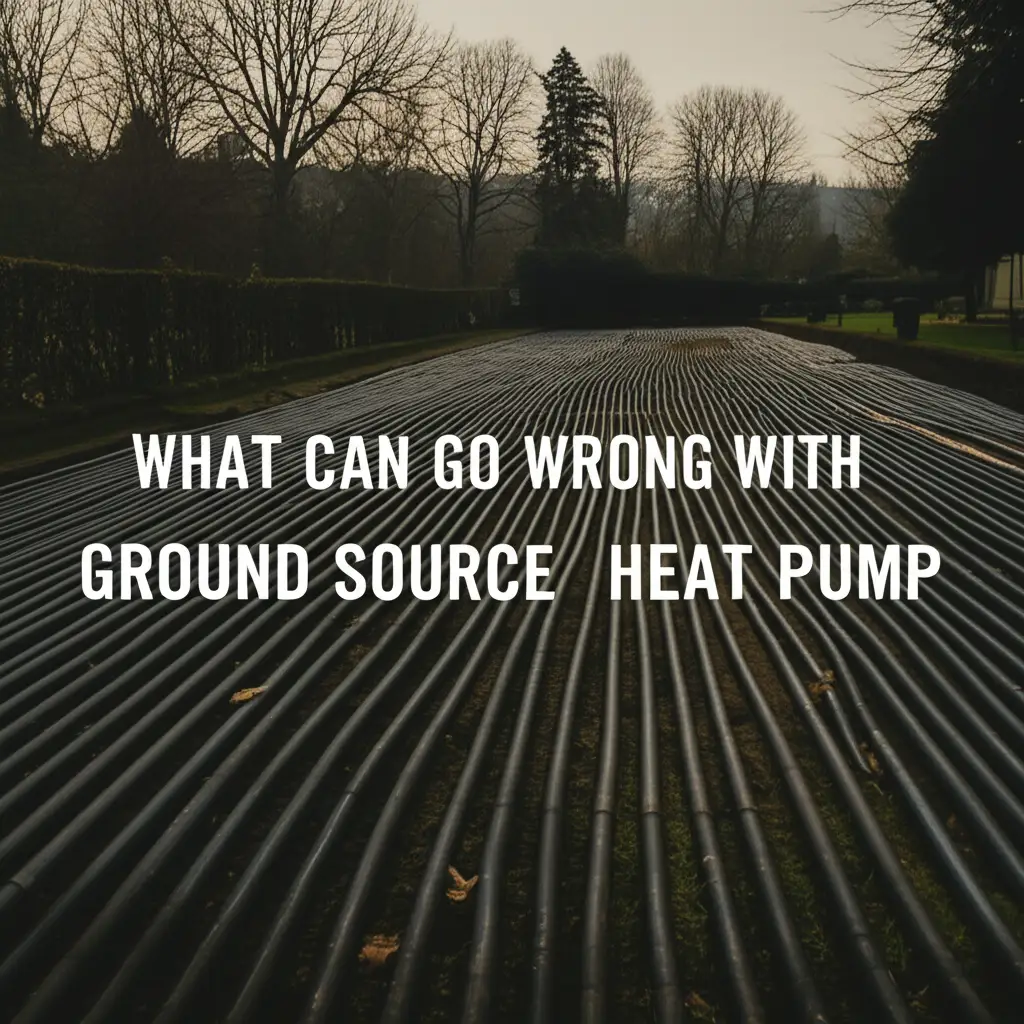· Katria Melrose · Geothermal Heating Systems · 17 min read
How Does Geothermal Heat Pump Work In Winter
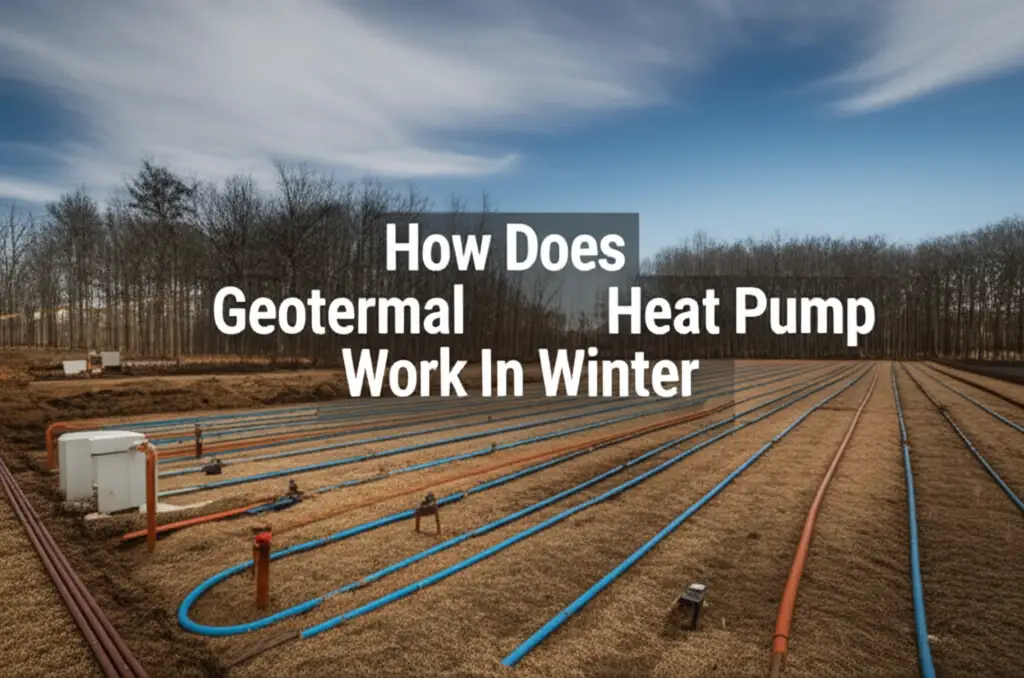
Geothermal Heat Pumps: Your Winter Warmth Solution
Winter often brings chilly temperatures, making reliable home heating a top priority. Many homeowners consider different systems. Air source heat pumps work well, but their efficiency can drop in extreme cold. This leads many people to ask, “How does geothermal heat pump work in winter?” Geothermal heat pumps offer a robust solution. They tap into the earth’s stable underground temperature. This consistent heat source makes them incredibly efficient.
In this article, we will explore the fascinating science behind these systems. We will explain how geothermal heat pumps extract warmth from the ground even during freezing conditions. We will cover the components involved, from the underground loops to the indoor unit. We will also compare geothermal systems to traditional air source heat pumps in winter performance. By the end, you will understand why geothermal heating is a powerful choice for consistent winter comfort.
Takeaway
- Geothermal heat pumps use the earth’s stable temperature to heat homes in winter.
- They extract heat from the ground, which remains warmer than the air.
- The system transfers this heat indoors using a refrigerant cycle.
- Geothermal systems provide highly efficient heating, even in extreme cold.
How Does Geothermal Heat Pump Work In Winter?
A geothermal heat pump works in winter by extracting constant heat from the ground. The earth below the frost line maintains a stable temperature, typically between 45-75°F (7-24°C), regardless of surface air conditions. The system circulates a fluid through underground pipes. This fluid absorbs the earth’s warmth. The heat pump then concentrates this collected heat and transfers it into your home.
Understanding Earth’s Constant Temperature: The Core of Geothermal Heating
The secret behind how a geothermal heat pump works in winter lies underground. The earth acts like a giant, stable battery. Below a certain depth, the ground maintains a surprisingly consistent temperature. This temperature stays relatively constant year-round. It is warmer than the winter air and cooler than the summer air.
This phenomenon is crucial for geothermal systems. While surface air temperatures can swing wildly, the earth’s temperature just a few feet down remains stable. This stability provides a reliable heat source. It does not matter if the air outside is 0°F or 30°F. The ground temperature remains dependable. This makes geothermal heat pumps a resilient choice for winter heating.
The consistent ground temperature means your heat pump does not have to work as hard. It extracts heat from a relatively warm source. This is very different from an air source heat pump. An air source unit must extract heat from freezing cold air in winter. This requires more energy. A geothermal system uses the earth’s warmth. This allows it to operate with high efficiency.
The Geothermal Loop: Your Home’s Underground Heat Collector
The geothermal loop is the heart of the system. It is a series of pipes buried underground. These pipes form a closed or open loop. A fluid circulates through these loops. This fluid is usually water or a mixture of water and antifreeze. As the fluid travels through the buried pipes, it absorbs heat from the surrounding earth.
In a closed-loop system, the fluid continuously circulates. It absorbs heat from the ground and carries it to the heat pump unit indoors. Then, it releases the heat and returns underground to collect more. Open-loop systems draw water from a well, extract heat, and return the water to another well or surface body. Both types effectively capture the earth’s warmth.
The design of the loop depends on your property. Horizontal loops are buried in long, shallow trenches. This option needs more land. Vertical loops involve drilling deep boreholes. This choice is good for smaller lots. Regardless of the loop type, its purpose is the same: to efficiently collect thermal energy from the ground. This consistent collection process ensures a steady supply of heat for your home, even on the coldest winter days. Understanding what a geothermal heat pump is and how it works provides a deeper look into this innovative technology.
Closed-Loop Systems
Closed-loop systems are the most common type. They use a continuous loop of buried pipes. A mixture of water and antifreeze circulates through these pipes. The fluid absorbs heat from the earth. It then carries this heat to the indoor heat pump. After releasing the heat, the fluid returns underground to pick up more warmth.
- Horizontal Loops: These are buried in trenches, typically 4-6 feet deep. They require a significant amount of land. This option is common for new constructions with ample space.
- Vertical Loops: These involve drilling several boreholes, 150-400 feet deep. They are ideal for properties with limited yard space. Vertical loops have a smaller footprint on the landscape.
- Pond/Lake Loops: If a body of water is nearby, coils of pipe can be submerged in it. This type is very efficient due to water’s excellent heat transfer properties.
Open-Loop Systems
Open-loop systems use groundwater directly. They draw water from a well. The heat pump extracts heat from this water. The water is then discharged back into the aquifer through a separate return well or into a pond/stream. These systems are highly efficient. However, they depend on sufficient groundwater availability and quality. They also require proper disposal methods.
The Heat Pump Unit: Transforming Earth’s Energy into Home Comfort
Once the geothermal loop collects heat from the ground, it transfers this warmth to the indoor heat pump unit. This unit is the central component that makes the system work. It uses a refrigeration cycle, much like a refrigerator or air conditioner, but in reverse. The heat pump unit elevates the temperature of the absorbed heat. It then distributes it throughout your home.
The process involves a refrigerant. The heat pump extracts heat from the fluid circulating in the underground loops. This causes the refrigerant to evaporate into a gas. This gas then goes through a compressor. The compressor increases the gas’s pressure and temperature significantly. This creates high-temperature, high-pressure gas.
This hot gas then moves to a condenser coil. Here, it releases its heat to the air circulating inside your home. As the gas gives off its heat, it condenses back into a liquid. The liquid then passes through an expansion valve. This reduces its pressure and temperature. The now cool, low-pressure liquid returns to the evaporator. It is ready to absorb more heat from the geothermal loop. This continuous cycle efficiently moves heat from the earth into your living space.
The Refrigerant Cycle Explained
The refrigerant cycle is critical to the heat pump’s operation. It consists of four main stages:
- Evaporation: The cold liquid refrigerant absorbs heat from the warm fluid coming from the ground loop. This causes the refrigerant to evaporate and turn into a low-pressure gas.
- Compression: A compressor increases the pressure and temperature of this gas. This makes the gas very hot.
- Condensation: The hot, high-pressure gas moves to an indoor coil. It releases its heat to the indoor air. As it cools, it condenses back into a liquid. This heated air then circulates throughout your home.
- Expansion: The liquid refrigerant passes through an expansion valve. This reduces its pressure and temperature. It returns to a cold, low-pressure liquid state. It is then ready to absorb more heat from the ground loop, restarting the cycle.
This ingenious process allows the geothermal heat pump to transfer vast amounts of thermal energy into your home. It does so with minimal electrical input. This makes it an incredibly efficient heating solution for winter. Geothermal energy can be used for many purposes beyond heating. Learn more about what geothermal heat pump energy is used for.
Geothermal vs. Air Source Heat Pumps: Winter Performance Comparison
When considering heat pump options for winter, the performance difference between geothermal and air source systems is significant. Air source heat pumps extract heat from the outside air. While effective in moderate climates, their efficiency drops sharply as temperatures fall below freezing. This is because there is less heat available in very cold air. They may also rely on auxiliary electric resistance heat more often in extreme cold. This increases operating costs.
Geothermal heat pumps, however, rely on the stable temperature of the earth. This consistent heat source means their efficiency remains high regardless of how cold the outside air gets. They do not experience the same performance degradation as air source units in freezing conditions. This makes them a more reliable and cost-effective heating solution for regions with harsh winters. While you might wonder how an air source heat pump works in winter, it’s clear geothermal offers a distinct advantage in very cold climates.
Air source heat pumps may struggle with defrost cycles in winter. Ice can build up on their outdoor coils. The unit must then pause heating to melt this ice. This can lead to periods of cooler air inside. Geothermal systems have no outdoor coil exposed to freezing air. They do not require defrost cycles. This ensures continuous, uninterrupted heating for your home. They provide consistent comfort without those temporary drops in heating output. This difference is especially noticeable in colder regions. You can also explore how an air source heat pump works in cold weather for a direct comparison.
Efficiency in Cold Climates
The efficiency of a heat pump is measured by its Coefficient of Performance (COP). A higher COP means more heat output for less electrical input.
- Geothermal Heat Pumps: Typically have COPs ranging from 3.0 to 5.0. This means for every unit of electricity consumed, they deliver 3 to 5 units of heat. Their COP remains stable even when outdoor air temperatures drop significantly. This is due to the constant underground temperature.
- Air Source Heat Pumps: Their COP can range from 2.0 to 4.0 in milder temperatures. However, as outdoor temperatures fall below 30°F (-1°C), their COP decreases. Below 0°F (-18°C), their efficiency can drop significantly, often falling below 2.0. This means they become less effective at extracting heat. They then rely more heavily on supplementary heating elements, which use more electricity.
This superior cold-climate performance makes geothermal systems a prime choice for homeowners seeking reliable and energy-efficient heating in areas prone to severe winters.
Installation and System Components for Winter Operation
Installing a geothermal heat pump for winter heating is a complex process. It requires professional expertise. The installation begins with preparing the ground loops. This involves either excavation for horizontal loops or drilling boreholes for vertical loops. The ground loop installation is a significant part of the overall project. It ensures the system can efficiently extract heat from the earth.
Once the loops are in place, they are connected to the indoor heat pump unit. This unit is typically installed in a basement, utility room, or garage. It looks similar to a conventional furnace or air handler. The indoor unit contains the compressor, heat exchanger, and other components necessary for the refrigeration cycle. It connects to your home’s existing ductwork or radiant heating system. This allows for warm air or water distribution throughout your living spaces.
The complete system includes the underground loops, the indoor heat pump unit, a desuperheater (for water heating), and a thermostat. A desuperheater can recover waste heat to provide domestic hot water, increasing overall efficiency. The thermostat controls the system, maintaining your desired indoor temperature. Proper installation is critical. It ensures the system operates efficiently and provides consistent warmth throughout the cold winter months. A well-designed and installed system provides long-term comfort and energy savings.
Key Components
- Ground Loop (Heat Exchanger): This network of buried pipes circulates fluid. It absorbs heat from the earth in winter.
- Heat Pump Unit: This indoor unit contains the compressor, evaporator, condenser, and expansion valve. It transfers heat between the ground loop and your home’s distribution system.
- Distribution System: This is typically your home’s existing ductwork for forced air heating. It can also be a radiant floor heating system. The distribution system delivers the heated air or water throughout your house.
- Desuperheater (Optional): This device captures waste heat from the compressor’s hot gas. It uses this heat to preheat your domestic hot water. This can provide significant savings on water heating costs.
- Thermostat: This device controls the heat pump operation. It allows you to set and maintain the desired indoor temperature. Modern thermostats offer programmable features.
Each component plays a vital role in ensuring the geothermal heat pump operates effectively. They work together to deliver consistent and efficient heating to your home, even when outside temperatures plummet.
Maximizing Efficiency and Longevity for Winter Heating
To ensure your geothermal heat pump performs optimally in winter, regular maintenance and smart usage are key. Just like any heating system, proper care helps maximize its efficiency and extend its lifespan. Simple steps can ensure you get the most out of your investment. These actions directly impact how well your geothermal heat pump works in winter.
One crucial step is regular filter replacement. A clean air filter allows for better airflow through the indoor unit. This improves heating efficiency and maintains good indoor air quality. I usually check my filter monthly during peak heating season. If it looks dirty, I replace it immediately. This simple task makes a big difference.
Another important practice is scheduling professional maintenance. I always recommend an annual check-up by a qualified technician. They can inspect the entire system, including refrigerant levels, electrical connections, and pump operation. They ensure all components are working correctly. This proactive approach helps catch minor issues before they become major problems. It also maintains peak performance and extends the life of the unit. While this article focuses on geothermal, general tips on how to make a heat pump more efficient in winter can offer additional insights applicable to your system.
Maintenance Tips for Winter Performance
- Regular Filter Changes: Replace or clean your air filters every 1-3 months. Dirty filters restrict airflow, making the system work harder. This reduces efficiency and can strain components.
- Annual Professional Inspection: Schedule a yearly tune-up with a geothermal specialist. They will check refrigerant levels, electrical connections, and loop pressure. They also clean coils and ensure all components are functioning correctly. This ensures peak winter efficiency.
- Clean Outdoor Areas: If you have an outdoor vertical loop system with exposed connections, keep the area around the connections clear of debris. This prevents damage and ensures accessibility for maintenance.
- Smart Thermostat Usage: Utilize a programmable or smart thermostat. Set back temperatures when you are away or asleep. This saves energy. Avoid large temperature swings, as these can make the heat pump work harder to catch up. A steady, consistent temperature is often more efficient.
By following these tips, you can ensure your geothermal heat pump continues to deliver reliable and efficient winter heating for many years. It’s also worth considering how long an air source heat pump lasts for a broader understanding of heat pump longevity. Geothermal systems generally have a longer lifespan due to fewer exposed components.
Is Geothermal Right for Your Winter Heating Needs?
Deciding if a geothermal heat pump is suitable for your home’s winter heating involves several considerations. These systems offer significant benefits, but they also have specific requirements. Understanding these factors will help you make an informed decision. I often tell people to weigh the long-term advantages against the initial investment.
One primary consideration is the upfront cost. Geothermal systems typically have a higher initial installation price compared to traditional furnaces or air source heat pumps. This is due to the earth loop installation. However, this higher cost is often offset by substantial long-term savings. Geothermal systems boast exceptional energy efficiency. They can reduce heating costs by 30-70% compared to conventional systems. This leads to a relatively quick payback period over time.
Another factor is your property. Geothermal systems require space for ground loop installation. Horizontal loops need a sizable yard. Vertical loops are suitable for smaller lots but require drilling equipment. Access for drilling or trenching is necessary. If you are building a new home, integrating geothermal is often simpler. Retrofitting an existing home is possible but can be more complex. Finally, consider the environmental impact. Geothermal systems produce very low greenhouse gas emissions. They are a clean, renewable energy source. This makes them an attractive option for environmentally conscious homeowners.
Key Considerations
- Upfront Cost vs. Long-Term Savings: Initial installation is higher, but energy savings are substantial. The system pays for itself over 5-10 years, depending on energy prices and incentives.
- Property Requirements: Sufficient land for horizontal loops or access for vertical drilling is necessary. This is a major determinant.
- Climate: Geothermal systems excel in all climates, especially those with harsh winters. Their consistent performance makes them ideal where air source heat pumps struggle.
- Environmental Benefits: They significantly reduce your carbon footprint. They use renewable energy and emit virtually no greenhouse gases directly.
- Rebates and Incentives: Many governments and utilities offer tax credits, grants, or rebates for geothermal installations. These can significantly reduce the initial cost. Research available incentives in your area.
- System Lifespan: Geothermal heat pumps have a long lifespan. The indoor components can last 20-25 years. The underground loops can last 50 years or more. This long durability adds to the value.
Considering these points will help you assess if a geothermal heat pump is the right choice. It is a powerful solution for reliable, efficient, and environmentally friendly winter heating.
FAQ Section
How efficient is a geothermal heat pump in winter?
Geothermal heat pumps are highly efficient in winter. Their efficiency is measured by COP (Coefficient of Performance). They typically have COPs between 3.0 and 5.0. This means they deliver 3 to 5 units of heat for every unit of electricity consumed. This high efficiency remains stable even in extreme cold. They draw heat from the consistent underground temperature.
Can a geothermal heat pump heat an entire house in winter?
Yes, a properly sized geothermal heat pump can heat an entire house in winter. These systems are designed to meet the full heating load of a residential property. They provide consistent warmth throughout your home. They can handle various house sizes and layouts. The system size depends on your home’s heating needs and insulation levels.
Does a geothermal heat pump need a backup heat source in winter?
Most geothermal heat pump systems include a small electric resistance backup heater. This backup typically runs during extreme cold snaps. It may also activate during very high demand. However, geothermal systems are so efficient in winter. The backup heat is used far less often than with air source heat pumps. It’s for auxiliary support, not primary heating.
How deep do geothermal loops go for winter heating?
The depth of geothermal loops depends on the type of installation. Horizontal loops are typically buried 4 to 6 feet deep in trenches. Vertical loops require boreholes. These boreholes can range from 150 to 400 feet deep. The goal is to reach a depth where the earth’s temperature remains stable year-round.
What is the lifespan of a geothermal heat pump system?
Geothermal heat pump systems have a very long lifespan. The indoor heat pump unit generally lasts 20 to 25 years. The underground piping loops have an even longer lifespan. They can last 50 years or more. This durability makes them a long-term investment. They offer reliable heating for decades.
Do geothermal heat pumps require a lot of electricity in winter?
Geothermal heat pumps use electricity primarily to run the compressor and pumps. While they use electricity, they are extremely efficient. They move heat rather than generating it. This results in significantly lower electricity consumption for heating compared to electric furnaces. They also use less electricity than air source heat pumps in very cold weather.
Conclusion
Understanding how a geothermal heat pump works in winter reveals its remarkable efficiency and reliability. These systems effectively tap into the earth’s stable underground temperatures. This allows them to provide consistent warmth for your home, even when outside temperatures plummet. Unlike air source heat pumps, geothermal units maintain high performance regardless of harsh winter conditions. They do not suffer efficiency losses or require frequent defrost cycles.
By collecting heat from the constant warmth below the frost line and transferring it indoors through a simple refrigerant cycle, geothermal heat pumps offer a robust heating solution. Their long lifespan, low operating costs, and minimal environmental impact make them an attractive choice for many homeowners. If you are seeking a sustainable and highly effective way to keep your home warm all winter long, a geothermal heat pump is worth exploring. Consider consulting with a geothermal professional today to see how this advanced technology can enhance your home’s comfort and energy independence.


